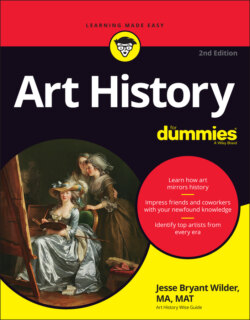Читать книгу Art History For Dummies - Jesse Bryant Wilder - Страница 41
Looking for contrast
ОглавлениеThe stiffness that balance can bring with it (see the preceding section) can be balance’s biggest problem. For example, most Egyptian statues are so symmetrical that they seem rigid and unable to move. Art needs something to upset the scales a bit.
Contrast can disrupt balance while preserving it, as in Polykleitos’s Doryphoros, or Spearbearer (see Chapter 7). The statue is balanced, but his limbs strain in opposite directions. The opposites — the cocked left knee and the cocked right arm — balance each other while creating contrast and tension.
Contrast has other roles in art beyond disrupting and preserving balance. It creates interest and excitement. Consider these examples:
Artists can create contrast by offsetting wavy lines with straight lines (a winding road snaking through a grid, for example) or by juxtaposing (placing side by side) organic shapes and geometric shapes (like planting a pear inside a pyramid).
René Magritte created startling contrasts by placing a soft, curvaceous woman beside a boxy solid wall and a rock in his painting La Magie Noire, or Black Magic; the color of the wall and the woman’s lower body are almost the same. But the wall is rough and rectangular, and the woman is soft and curvy.
That’s contrast.
